Keel laid for Finland's First Multi-Mission Corvette
The 1.3 billion euro program will deliver four multi-mission, ice capable corvettes by 2029.
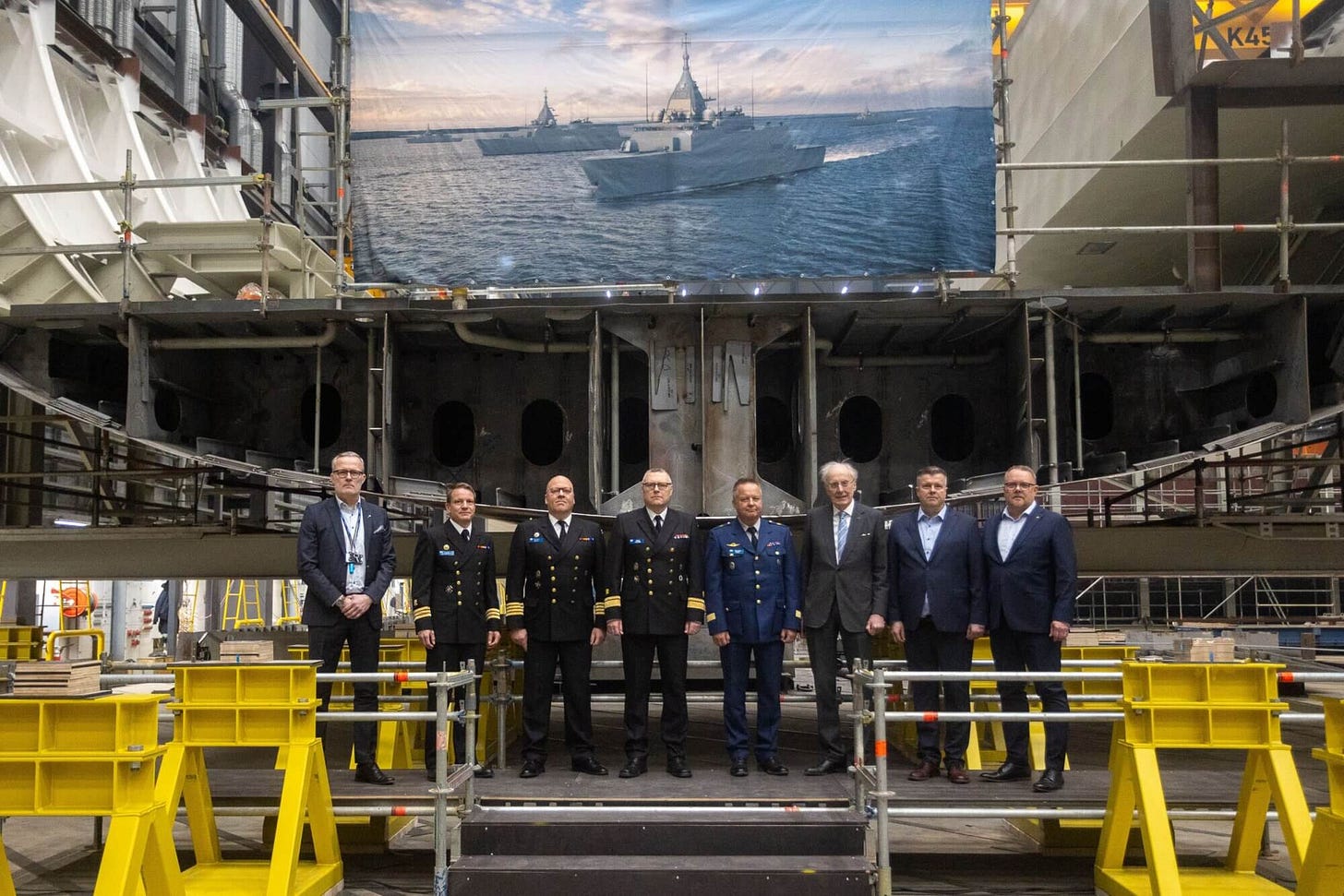
The keel of Finland’s first Pohjanmaa-class corvette was laid on April 11, 2024, at Rauma Marine Constructions (RMC) in Rauma, Finland:
The keel of a ship and its cradle were lowered on a building trestle inside a construction hall where the ship is being built. As is the tradition, two lucky coins were placed under the ship that will remain there once the ship is completed.
Due to national security reasons, the corvettes are being built indoors. This is why outsiders were prohibited from also attending the keel laying ceremony. Present in the ceremony were the ordering party, that is the Finnish Defence Forces Logistics Command, the Finnish Navy, maritime classification society Lloyd’s Register as well as the Rauma Marine Constructions (RMC) management and key employees in the project.
RMC will build for multi-mission corvettes for the Finnish Navy over the next five years.
Squadron 2020: The Pohjanmaa-class Corvette.
The corvettes, also known as the “Squadron 2020 project” will replace seven aging vessels: four Rauma-class fast-attack missile boats, two Hämeenmaa-class minelayers, and the already decommissioned minelayer Pohjanmaa.
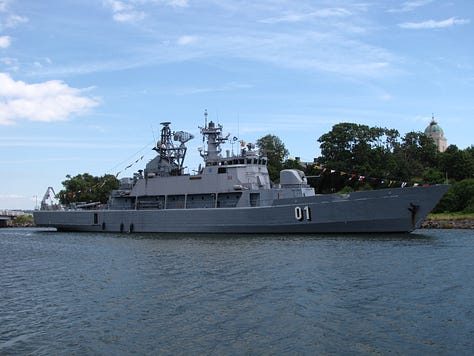
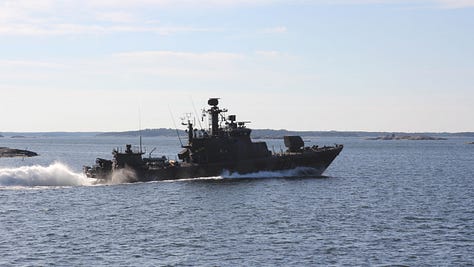

Pohjanmaa Corvette Specifications:
Displacement: 4300 t
Length approx.: 117 m
Beam: 16 m
Draught: 5 m
Crew: 73 persons
Endurance: 14 days
Speed: Over 26 knots
Armament:
Gabriel V surface-to-surface missile system
ESSM Block 2 in Mk 41 VLS (2x8 cells1)
Saab lightweight torpedo Torped 47
Minelaying system: sea mines
Self-defense systems: 57 mm BAE Bofors gun, decoy launchers and remote-controlled weapons (Saab Trackfire RWS).
Sensors: Surveillance and fire control radar, sonar and towable hydrophone cable, hull-mounted sonar
Combat management system: Saab 9LV
Ice Class: 1A
Because of the size and capability of the corvettes, there was some debate in Finland about whether they were actually “the most capable corvettes in the world” or would be more accurately described as “decently sized frigates”.
Finnish military blogger Robin Häggblom describes the Pohjanmaa-class this way:
I still hold it likely that if the Pohjanmaa-class eventually join the Navy in the shape currently envisioned and under the adjusted budget, the Finnish Navy will not only operate the strongest single warships currently based in the Baltic Sea, but they will do so at a bargain…. However, the Navy has so far shown to be able to focus on the important, and make the cuts where they will least impact the effectiveness of the vessels. The Finnish concept of operations is also clearly visible in these compromises, such as the small calibre of the main gun (the vessels aren’t expected to provide naval gunfire support) and the decision to go with a medium-range air defence system as opposed to trying to fit a long-range bluewater system….
In the end, the Pohjanmaa-class is clearly intended as a fighting weapon, and not as a fleet in being as Huhtanen suggests. They will play an important part in deterring hostile aggression throughout the spectrum from peace to war, and in doing so provide a flexibility found in few other systems.
At a total cost of 1.3 billion euro for four ships (main weapons are accounted separately) these will be both cost effective and capable. At one point (very early on) I heard that the AEGIS system was under consideration, but that it in the end it was just too costly. In a discussion on his blog regarding the cost of a CIWS against other gun systems, Häggblom cited a “doctrine” which also seems much at play in the AEGIS decision:
This is as expected, and much in line with the FDF doctrine that a 85 % solution at half the cost is always worth more than a 100 % solution at twice the cost.
Although replacing seven ships with four seems like dubious math, there will be an increase in year-round capability. Of the seven vessels being replaced, only six are currently in operation. And of that six, only two- the Hämeenmaa-class minelayers- are ice capable. Replacing these ships with four multi-mission vessels capable of 24/7/365 operation is a step up in year-round readiness.
Rauma Marine Constructions
The current owner of the Rauma shipyard, RMC, took over the yard from STX Finland in 2014. There has been modern shipbuilding in Rauma since 1945, when Finnish companies began building ships for the Soviet Union as part of war reparations. Since the 1990s the Rauma yard has built military vessels (such as the Hamina-class missile boats), icebreakers (including the multi-purpose icebreakers Nordica, Fennica, and Botnica), and nearly forty different commercial car and passenger ferries.
Today, RMC maintains the same specialties. During its ten-year ownership, RMC has to date completed three car ferries for Baltic use, including the 1A Super ice-class Aurora Botnia. RMC currently has three vessels in side-by side construction: the Spirit of Tasmania IV & V, and the first hull of the Pohjanmaa-class corvette.
That’s right- ferries for use between Australia and Tasmania are being built in Finland2. According to RMC:
In 2021, we signed a deal with the Tasmanian TT-Line Company (Spirit of Tasmania) for the construction of two car and passenger ferries, both of which will be sailing an extremely challenging open sea route across the Bass Strait between Geelong, Victoria in mainland Australia and Devonport, Tasmania. The ferries have been specially designed to undertake this specific route.
When finished, the ferries will be the southernmost vessels to operate with liquefied natural gas (LNG). In addition, they will also incorporate a dual fuel solution, which will allow them to use alternative, bio-based fuels if needed.
We’ll come back to the Pohjanmaa-class corvettes and the capabilities of RMC in the future, I’m sure.
Until next time, thanks for reading, subscribing, and spreading the word.
Like by pressing the heart if you want to see more posts like this and consider sharing with a friend.
All the Best,
PGR
ESSM comes in quad packs, with 4 missiles per VLS cell. There is some speculation that the corvette might actually include 4x8 VLS cells, but this is only speculation.
The Rauma yard also built a polar research/supply vessel for South Africa, the S.A. Agulhas II, delivered in 2012. So yes, they sold an ‘icebreaker’ to Africa.

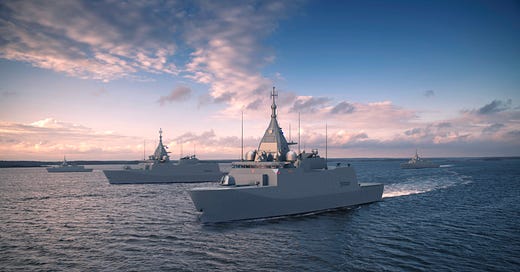



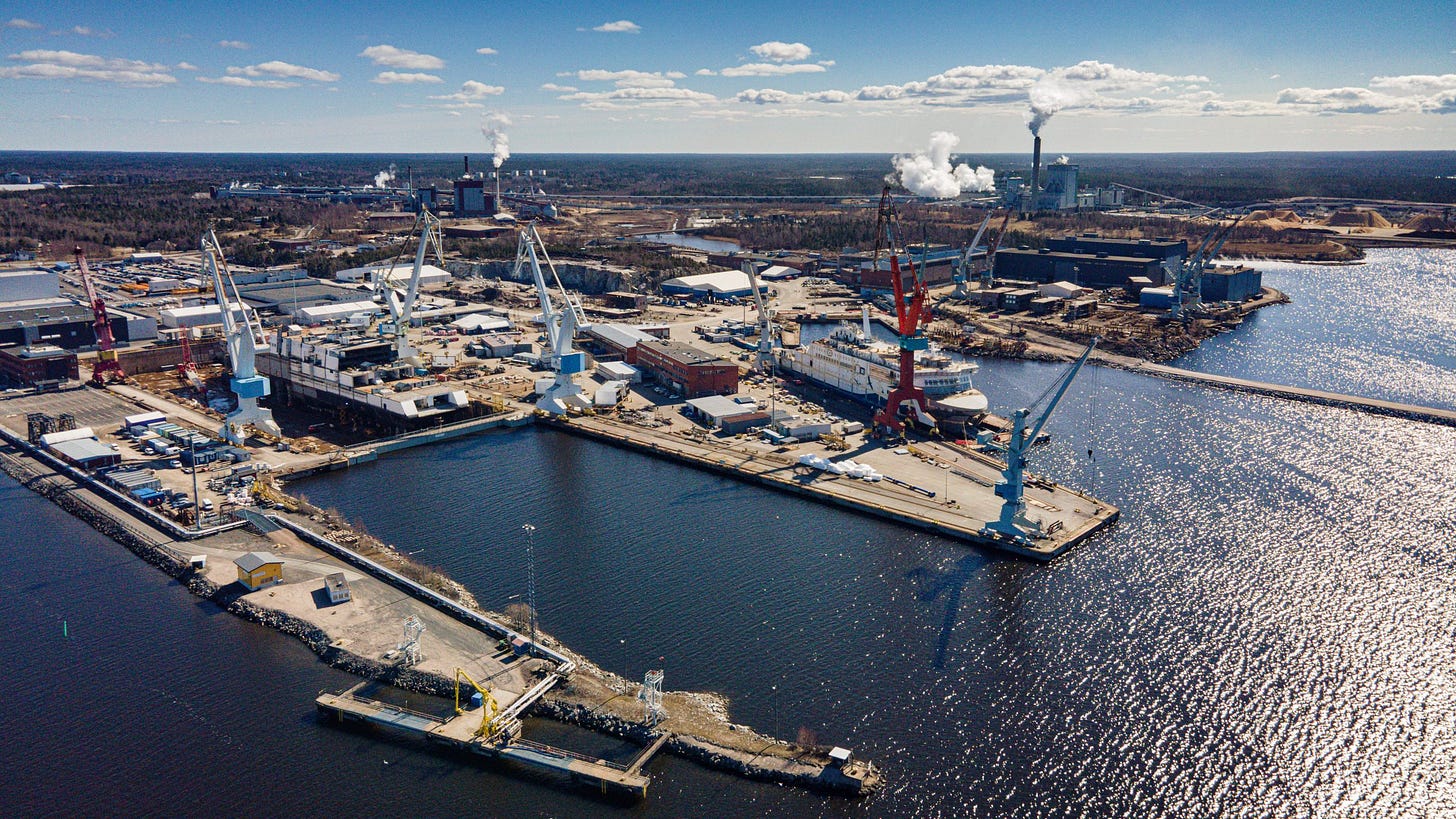
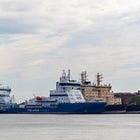
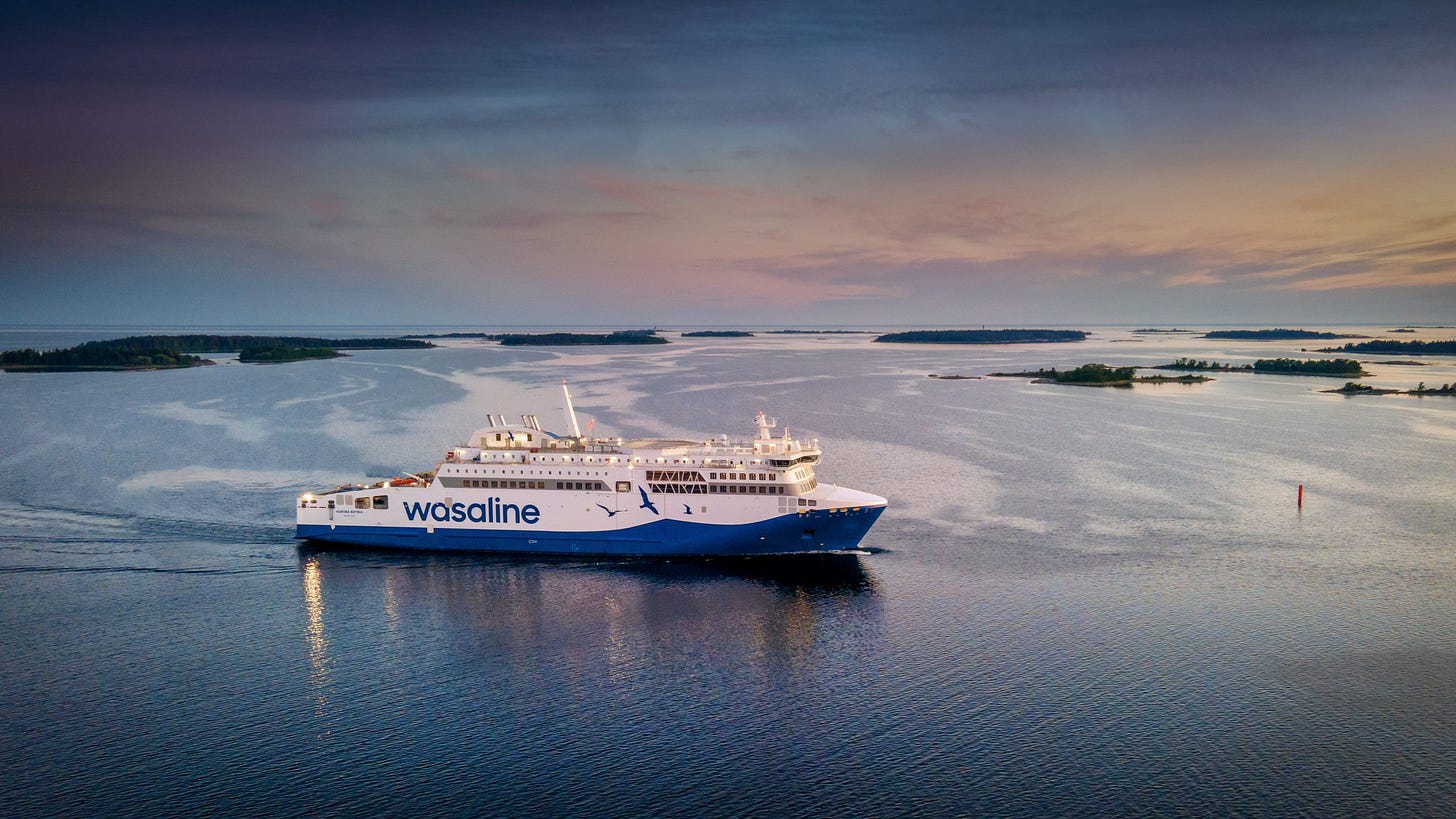
Love it Pete! Keep up the good writing!!!
Big mama